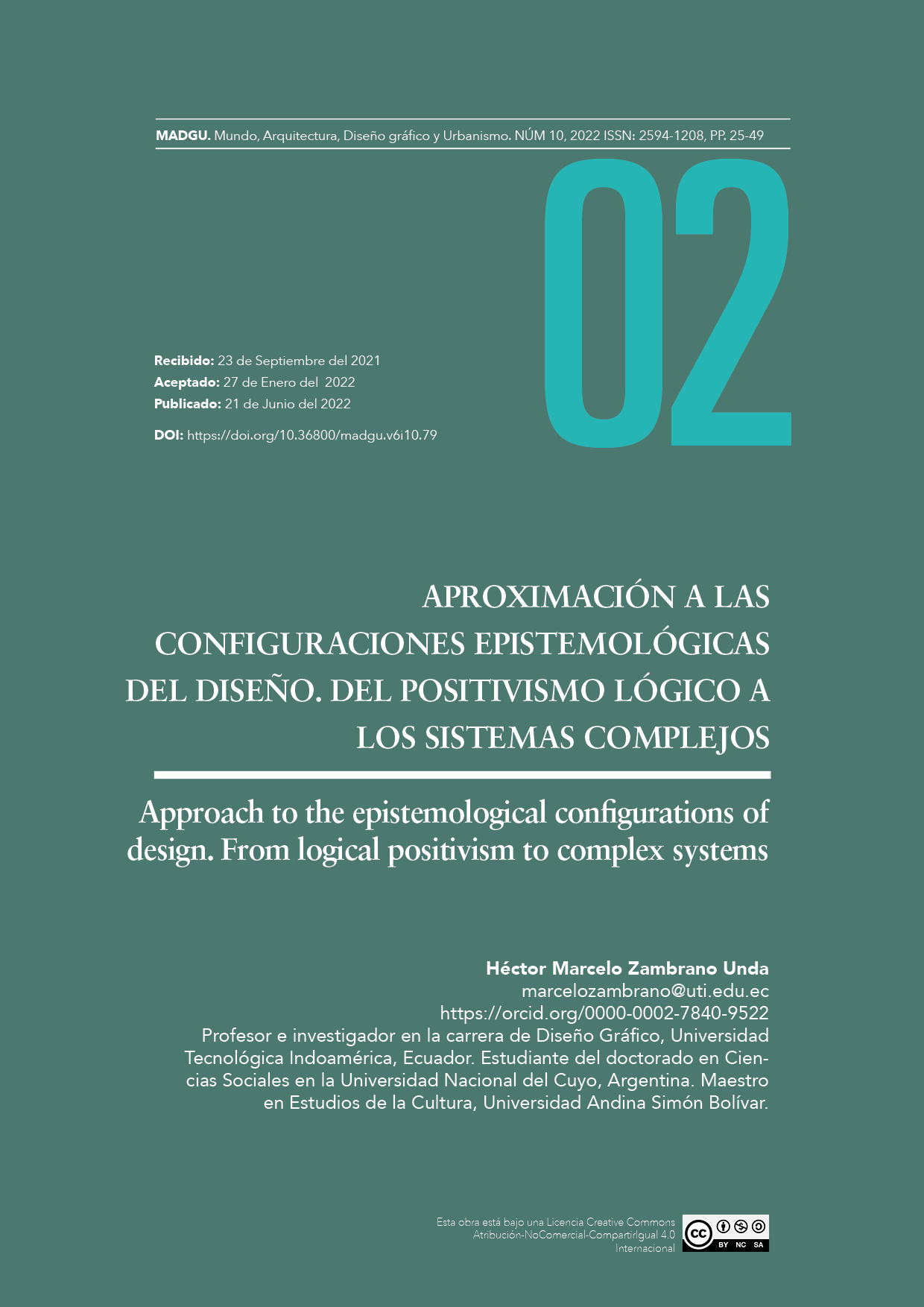The importance of epistemological reflection in design
Approach to the epistemological configurations of design. From logical positivism to complex systems
DOI:
https://doi.org/10.36800/madgu.v6i10.79Keywords:
design epistemology, positivism, inductive reasoning, deductive reasoning, abductive reasoning.Abstract
The practice of design is defined by processes of research and delimitation of problems generally related to social environments. Therefore, the elements that make up the research processes: epistemology, theoretical perspectives, methodology, and methods, should be presented clearly and concisely, however, epistemological positions have not been taken into account in design projects. This article proposes to point out these underlying positions in some methodological design proposals through a review of the approaches of Bruce Archer and Christopher Alexander, who approach and configure their epistemological positions from logical positivism. Based on these points, it is proposed to review the possibilities of abductive reasoning in the face of inductive and deductive inferences closer to paradigms of empirical sciences. This text proposes a clearer approach and exposition of the epistemological reflections in the design processes, which would allow deepening in the investigation and more complex approaches in theoretical and methodological terms in the projects approached by designers and designers.
Downloads
References
Alexander, C. (1973). Notes on the Synthesis of Form: Harvard University Press.
Archer, B. (1965). Systematic Method for Designers. En Cross, N. (1984). Developments in Design Methodology. (pp.57-82). John Wiley & Sons Ltd.
Ayer, J. (1981). El positivismo lógico: Fondo de Cultura Económica.
Bachelard, G. (1993). La formación del espíritu científico. Contribución a un psicoanálisis del conocimiento objetivo: Siglo XXI.
Brown, T. (2008). Design Thinking. En Harvard Business Review. Junio 2008 (pp 1-10).
Chalmers, A. (1990). ¿Qué es esa cosa llamada ciencia?: Siglo XXI.
Crotty, M. (1998). The Foundations of Social Research. Meaning and perspective in the research process: SAGE.
Jones, J. (1963). A Method of Systematic Design. En Cross, N. (1984). Developments in Design Methodology: John Wiley & Sons Ltd.
Mach, E., Hahn, H., Neurath, O. y Carnap, R. (2002). La concepción científica del mundo: el Círculo de Viena. En Revista REDES Vol. 9, No 18, junio de 2002. (pp. 103-149).
March, L. (1976). The Logic of Design. En Cross, N. (1984). Developments in Design Methodology. (pp.265-276): John Wiley & Sons Ltd.
Margolin, V. (2002). Las políticas de lo artificial. Ensayos y estudios sobre diseño: Editorial Designio.
Peirce, C. S. (1998). Chance, Love, and Logic: Philosophical Essays: University of Nebraska Press.
Popper, K. (1980). La lógica de la investigación científica: Tecnos.
Rittel, H. y Webber, M. (1973) Planning Problems are Wicked Problems. En Cross, N. (1984). Developments in Design Methodology. (pp.135-144): John Wiley & Sons Ltd.
Scaglia, J. P. y Gallardo, V. (2011). Pensar el proyecto. En Diseñar la inclusión, incluir al diseño. Aportes en torno al territorio de convergencia entre diseños y políticas sociales. (pp.113-135): Ediciones Azzuras.
Simon, H. (1973). The Structure of Ill-structured Problems. En Cross, N. (1984). Developments in Design Methodology: John Wiley & Sons Ltd.
Tribus, M. (1969). Rational Descriptions, Decisions and Design: Pergamon Press Inc. DOI: https://doi.org/10.1016/B978-0-08-006393-5.50013-1

Downloads
Published
How to Cite
Issue
Section
License
Copyright (c) 2022 Marcelo Zambrano

This work is licensed under a Creative Commons Attribution-NonCommercial-ShareAlike 4.0 International License.
Las opiniones expresadas por los autores no necesariamente reflejan la postura del editor de la publicación. Esta obra está bajo una Licencia Creative Commons Atribución-NoComercial-CompartirIgual 4.0 Internacional.








